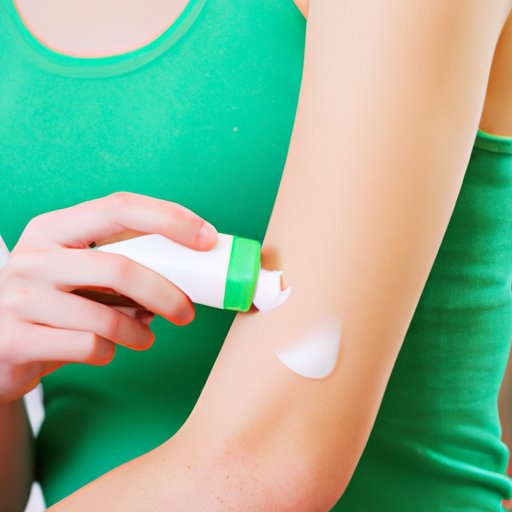
I. Introduction
Chafing is a common yet unpleasant skin condition that can cause discomfort and pain. It occurs due to the friction between the skin, clothing, and other surfaces. It is especially prevalent in areas where the skin is constantly rubbing against other skin, such as thighs, underarms, and nipples. In this article, we will discuss tips and tricks to prevent chafing and keep your skin comfortable.
II. Understanding the Causes of Chafing
Chafing occurs when the skin experiences friction or rubbing, leading to skin irritation and inflammation. It can happen due to a variety of reasons such as prolonged physical activities, tight-fitting clothes, ill-fitting underwear, and excessive sweating. It can also occur due to skin conditions or allergies to certain fabrics.
III. Choosing the Right Clothing
Wearing the right clothing can help prevent chafing. Opt for breathable, moisture-wicking fabrics such as cotton, bamboo, or synthetic blends. Avoid tight-fitting clothes that can cause friction and chafing. Choose seamless or flat-seamed clothes that don’t have rough edges that can rub against your skin. For areas that are more prone to chafing, such as thighs, use specialized anti-chafing shorts or bandanas to minimize friction.
IV. Proper Hygiene
Maintaining proper hygiene is crucial in preventing chafing. Keep your skin clean and dry to minimize moisture accumulation, which can promote skin irritation and infection. Use soap or body wash that is gentle on your skin and avoid harsh chemicals that can strip your skin of natural oils. To reduce sweat buildup, apply talcum powder or cornstarch in areas prone to chafing. If your skin is dry, use moisturizers to keep it soft and supple. In cases of excessive sweating, consider using antiperspirants. If you develop persistent chafing or an infection, visit a dermatologist.
V. Using Skin Protectants
Using skin protectants can help reduce friction and prevent chafing. Skin protectants such as powders, ointments, creams, or balms can create a barrier between your skin and clothing, reducing skin irritations and inflammation. Look for products that contain zinc oxide, petroleum jelly, or dimethicone. Apply the product evenly on dry, clean skin before putting on clothes. Reapply as needed.
VI. Staying Active
Physical activities can be a cause of chafing, especially in areas such as thighs and underarms. Choose the right workout clothing that is comfortable, breathable, and moisture-wicking. Wear compression shorts or leggings that can reduce friction and provide more support. Apply skin protectants on areas prone to chafing before starting your workouts. Maintaining a healthy weight can also help reduce chafing, especially in areas such as thighs, stomach, and breasts. Losing weight can help reduce skin-on-skin friction and create a smoother skin surface.
VII. Conclusion
Chafing can be a painful and uncomfortable condition, but it can be easily prevented by taking proper precautions. Choosing breathable clothing, maintaining proper hygiene, using skin protectants, and maintaining a healthy weight are some of the effective ways to prevent chafing. Remember to listen to your body and seek medical attention if you develop persistent chafing or an infection. By adopting these simple measures, you can keep your skin comfortable and free from irritation.





